Thyroid Disorders
Thyroid conditions are not uncommon in fact they are the most common endocrine disease in dogs, endocrine relates to glands which produce hormones. The hormones produced by the thyroid gland control many bodily functions including energy usage, growth and development and affect many organs. The thyroid gland takes in iodine and produces two hormones called T3 and T4 that regulate the body’s metabolism and control the amount of cell energy produced. The thyroid gland is located in the throat.
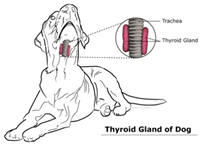
There are two major types of thyroid problems: Hypothyroidism (under production of hormone) and, less common in dogs, Hyperthyroidism (over production of hormone) which as well as a condition in itself, can be caused by over medication of Hypothyroidism.
There can be many symptoms, seen in any combination and severity, and similarly these can be seen with other hormone and non-hormone related diseases so it can be challenging to be sure of a hypothyroidism diagnosis. The condition is more commonly seen in dogs of between 4 and 9 years of age but can be seen in younger dogs. Some symptoms are immediate others build up over time.
Symptoms
Hypothyroidism(slowing down of metabolism) | Hyperthyroidism(speeding up of metabolism) |
Weight Gain | Weight Loss |
Dry Flaky Skin with Sores | Increased Appetite |
Excessive Shedding | Excess Thirst, Frequent Peeing |
Decreased heart rate | Elevated heart rate |
Hair loss | Vomiting/diarrhoea |
Lethargy | Nausea |
Cold sensitivity | Enlarged thyroid |
Muscle weakness | Hyperactivity/restlessness/nervousness |
Secondary eye/ear infections |
|
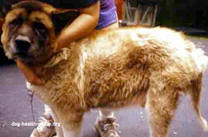
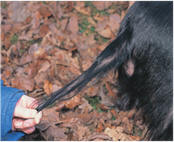
Hypothyroidism can cause reproductive disorders, increased aggression, behavioural problems, allergies, immune system weakness, depression even seizures This is a complex condition and quite often symptoms are not displayed until the dog is over 4 years old. A classic sign is a swelling of the skin and underlying tissue causing a ‘tragic’ ‘sad’ or ‘grumpy’ facial expression.
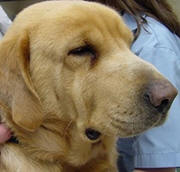
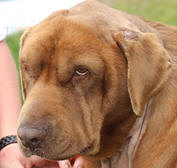
Diagnosis
Diagnosis is usually determined by blood test. Alaskan Malamutes are known for a slower Arctic breed metabolism and a lower T4 reading, meaning that the in-house T4 test carried out by your vet may give your dog a reading within the normal range, when for this breed it isn’t, therefore it is highly advisable to do a full panel thyroid test, your vet will send blood away to a laboratory for testing T3, T4 and TSH giving a more accurate diagnosis
Treatment
Non treatment of this condition can prove fatal
Hypothyroidism is treated by replacing the missing hormone with a synthetic version in tablet form twice daily for life, fortunately not an expensive treatment. Monitoring for levels is usually carried out by testing every 6-8 weeks, too much hormone replacement can cause the opposite condition Hyperthyroidism or Thyroxine overdose. Dogs on appropriate treatment can live a long and healthy life.
A GOOD IDEA PRACTISED BY SOME KENNELS IS TO HAVE A FULL THYROID PROFILE DONE ON YOUR DOG AT THE AGE OF TWO..THIS GIVES YOU A BASELINE WHICH ANY SUBSEQUENT TESTS CAN BE COMPARED AGAINST..TELLING YOU WHETHER YOUR DOG IS NORMAL OR HEADING DOWN ON THE WIDE RANGE OF THE THYROID SCALE. INDICATING A POSSIBLE PROBLEM.
